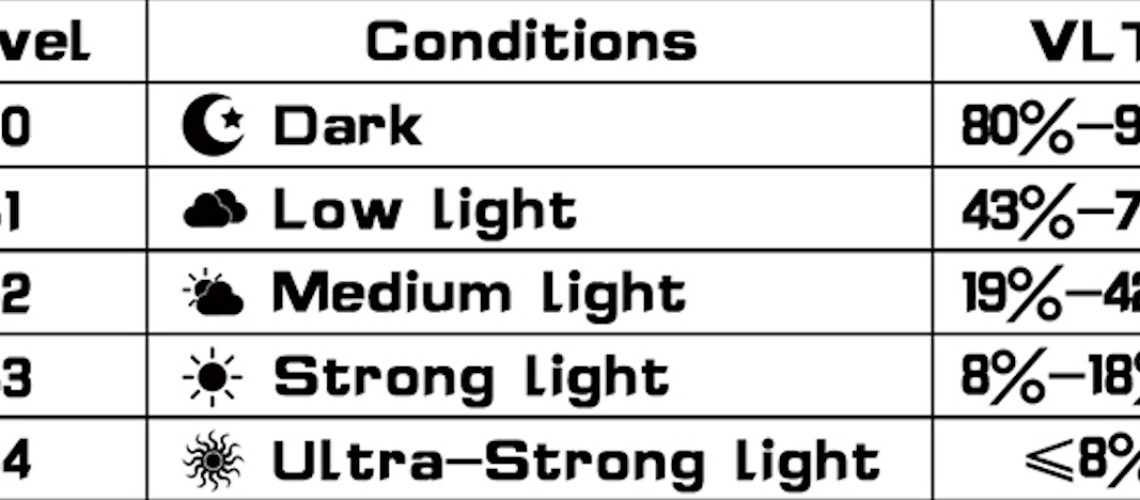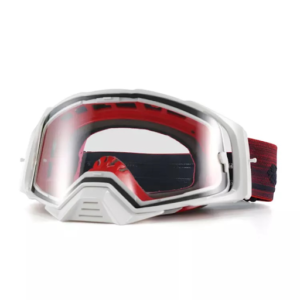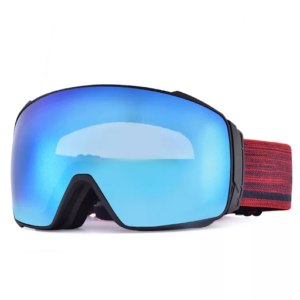Ski goggles are an important part of your skiing gear. They protect you from wind, snow, and debris and can also enhance your vision to help you see the slopes better. While there are different lenses for different light conditions, some are designed to be suitable for all conditions.
Visible light transmission (VLT) determines which lenses are suitable for which conditions. So understanding VLT is important when buying ski goggles. VLT varies by lens color and tint. Those who take on the slopes frequently may want to invest in ski goggles that are best for all conditions or go with those with interchangeable lenses.
This article provides in-depth information about VLT, lens colors and tints, and lists lenses for every type of light condition.
Visible Light Transmission for Goggles
Visible light transmission, or VLT, is presented in percentage form and refers to the amount of light that passes through the lens and reaches your eye. Ski or snow goggles with a lower VLT would transmit less light than those with a higher VLT.
The tint of the lens determines the VLT, as this coating layer alters the flow of light through the lens material. Depending on the lens tint/color, the VLT may vary, making the ski goggles suitable for particular light conditions.
Aside from determining VLT, lens tints also impact another critical aspect: contrast enhancement, especially for low light conditions. Research confirms that all tinted lenses increase contrast sensitivity.
Best Lens Colors & Tints for Bright/Sunny Days: 5-20% VLT
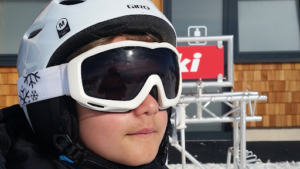
Ski goggles with a VLT of 5-20% are only suitable for skiing on sunny days. As they have low light transmission, these lenses adjust the brightness so you can see better without the bright sunlight causing discomfort.
The best tints for bright light conditions are platinum, black, and red.
These tints are dense and prevent most light rays from entering the lens. On sunny days, the light can be reflective, which makes it hard to see obstacles clearly.
On the other hand, this VLT range and these three tints are not ideal for other light conditions. These may dim the vision further if used in cloudy or dark conditions.
Best Lens Colors & Tints For Partly Sunny/Overcast Days: 25-55% VLT
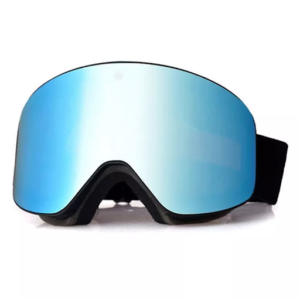
The 25-55% VLT range of ski goggle lenses is the most common, as this is ideal for part sunny, part overcast conditions found in many popular skiing regions.
The lens tints that deliver 25-55% VLT include red, green, and blue.
Most brands you will see in the market offer lenses in this VLT range because these suit the typical weather patterns in cold regions. Also, such light conditions are perfect for skiing as it’s not too bright and not too dark.
Best Lens Colors & Tints For Overcast/Snowy Days: 65-90% VLT
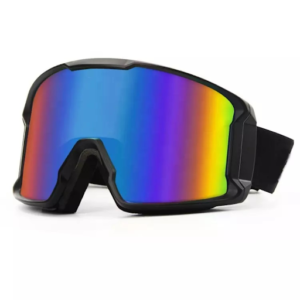
For those days when there’s an overcast, and barely any sunlight reaches the trail, you’ll need tints that offer higher VLT, at least 65 percent. We call this condition flat light.
For flat light conditions, yellow, gold, copper, amber, and pink tints are the best. These very low-level tints allow most of the light to transmit through the lens, allowing you to see better.
These tint colors also offer high contrast, which is necessary for recognizing irregularities in the terrain.
Of course, such tints are not suitable for bright conditions. However, orange or amber tints may also work in slightly bright light conditions.
Best Lens Colors & Tints For Night Skiing
While light yellow, gold, and pink tints can work in very low light conditions like after sundown, the best lenses for night skiing are clear. At night, you’d need all the light you can get to see the trail, so clear lenses without any tint are the best.
Clear lenses protect from elements and don’t obstruct light as they have nearly 100% VLT.
Best Lens Colors & Tints For All Conditions
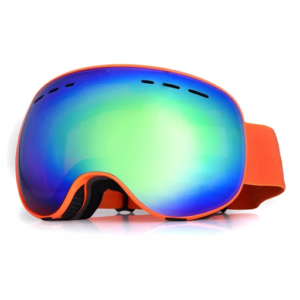
Different light conditions require different lens colors/tints according to the suitable VLT range. However, some tints can work in all light conditions, making them a convenient option for those who don’t want to invest in multiple lenses.
Red, green, and blue color lenses in ski goggles can work in most light conditions, ranging from cloudy to sunny. While the VLT for these tints can range from 25-55 percent, it’s best to go with a higher number when considering buying ski goggles for all conditions.
You can also invest in photochromatic lenses that automatically change their tint according to the light conditions. When it’s sunny, the lens gets darker. When it’s overcast, the lens stays a light color.
Other Lens Options Affecting VLT
Besides the tint or color of the lens, some other features can also determine how much light transmits through the lens.
Polarized Goggle Lenses
Polarized lenses can filter light, and their primary purpose in ski goggles is to reduce glare.
Glare typically occurs in very bright sunny conditions when the sun’s rays combine with reflective rays from the surface of objects. During skiing, the golden glare from the snow can directly impact vision. However, it can also help identify ice patches on the slopes.
Polarized ski goggle lenses typically have 50% polarization and low VLT as they are designed for bright light conditions. These won’t work for low light conditions, especially in flat light.
Mirrored Goggle Lenses
Mirrored lenses have a coating on the outside that reflects most of the light. These lenses have a mirror-like look, hence the name. The VLT range of mirrored ski goggle lenses is usually 10-50%.
Again, these lenses are suitable for sunny days only and do not work well for overcast or nighttime conditions.
Summary
VLT and tint are critical considerations when choosing the lenses for skiing goggles. These two factors determine the suitability of the goggles for particular light conditions.
Higher-level tints with low VLT, like black, gray, or platinum, are ideal for sunny days. Similarly, polarized or mirrored goggle lenses also have low VLT and are suitable for bright outdoor conditions.
For flat light (low light conditions), lenses with a higher VLT of over 55% are necessary. These include tints like yellow, amber, and pink. Clear or very light tint lenses are suitable for night skiing, preferably with a VLT of near or over 90 percent.
Red, green, and blue tints make the best ski goggle lens for all conditions during skiing. These color lenses have mid-range VLT that adjusts to different light situations.
If you’re looking to design and sell ski goggles for all conditions, MPM Goggles specializes in making custom ski goggles. Using superior-quality lenses with adequate VLT, we make ski goggles for various light conditions on the slopes.

